Endurance Nation has a long history on the Ironman® Florida course: Coach Patrick has raced the event two times and we’ve been at almost every race since 2001. TeamEN has historically had between 25 and 40 athletes at the race every year since 2008; it’s a popular destination for newbies as well as veterans looking to try and grab a legacy spot or a leg up on a Kona slot.
We’d like to share that experience with you with these consolidated tips and resources specific to the Florida course.
Weather
In our opinion, Florida has some of the friendliest race day weather of the US Ironman® circuit. Surprised? Despite being in the panhandle on the Gulf of Mexico, the Fall is very consistent.
Temps are generally very cool in the morning, in the upper 50s / low 60s. Racers opt for arm warmers / vests / gloves on the bike, before things warm up slightly on the run into the 70s.
The sun does go down early — around 5pm! — and you can expect the temperature to drop then. The X factor here is the wind, which can be friend or foe. Of course, you still need to be prepared to race in any conditions.
Timing of the Event
The timing of an event should the #1 criteria you use for selecting what Ironman to train for and race — not hills, not weather, not water temperature, but does rather the timing of the event work for you.
Will you have cooperative weather and hours of daylight available for training, especially in the last 8-10wks of your work up?
Can you handle long Fall training rides in cooler temps? With fewer training partners?
Do not underestimate the challenges of long, long rides on the trainer necessitated by choosing a sub-optimal combination of race date and your typical weather conditions in your final workup.
The November date of the race means that your biggest challenge will be navigating a very long season. Many athletes start training for the race way too early, and experience serious burn out…so be careful! You’ll also struggle to find folks who want to swim and bike with you, as by Fall most triathletes have turned things over to running or down time. You might have to bribe them!
Below are our notes on how all of this shakes out for US-based athletes:
- Southeast: Location can’t be beat. The timing of the race is good, with regards to hours of daylight, the ability to train outside, and to acclimatize to the likely race conditions.
- Northeast: Timing is…tough. Late in the year means more time to train, but it also means cooler weather. Worth it for newbies for sure.
- Midwest: See Northeast above.
- Northwest: Training outside = fair if you don’t mind the wet weather; acclimatize = not so good; logistics and travel costs = cost prohibitive.
- Southwest and West: No issues with hours of daylight and the ability to train outdoors. Adjusting to the cool weather might be a shock. More than anything else, the sheer distance of the race makes it rank a bit lower.
The Venue
Travel costs and logistics: Panama City Beach is about a 5-hour drive from Atlanta (with Coach Rich behind the wheel!). The local airport is great, just expensive. Some opt to fly into neighboring Fort Walton Beach and drive 80 minutes in a rental car (get one big enough for your bike box!).
Lodging: There are TONS of condos and places to stay in PCB, as it’s a spring break haven. You have your pick, but note that some of the cheaper places are really not so nice / clean.
Parking: Parking is tough, as each condo ends up “monitoring” their lots. You can purchase a day pass to park in the lot of Club La Vela — America’s largest night club, baby!!! The parking rate is very affordable.
Dining: There are good places for all types, you just have to look. Mellow Mushroom is a great post-race option. Incredibly healthy food awaits you at the Lotus Cafe & Juice Bar and there are plenty of other places to get your eat and drink on.
Now, let’s get on with the race!
The Swim
Practice Swims: Because the beach is open to the public, there are really no buoys out there all week. It won’t be fully setup until sometime Friday. You’ll be able to swim in the ocean before race day — in fact we recommend it as swimming in a wetsuit in salt water is a uniquely buoyant experience! We recommend you swim using landmarks such as buildings on shore to determine distance vs heading out into the Gulf. It’s not about the distance; it’s simply important that you get a feel for the water conditions.
The Swim Start: The Florida swim start is a mass rolling start, similar to your local half marathon. Seed yourself by approximate finishing time, and then officials will “walk” the groups in to the water in a timely manner. Very simple!
The Course: The Florida swim is a two loop affair with a beach start. You’ll swim directly out from shore about 800m, turn Left and swim about 800m, turn left to swim 500m parallel to shore, and then swim 800m back to land. You’ll exit the water (free drinks!) and then return on a diagonal path to swim out towards the first buoy for lap one.
Please Note — There are typically sand bars on the way back, so be prepared to see folks walking. Do not walk or run in the water if you can swim at all.
The Temps: The water temperature is pretty consistent in the low 70s. We recommend a full wetsuit and a relaxed swim effort. Some athletes opt to wear long john wetsuits, but it’s really your personal preference.
The Transition
Florida has a pretty decent transition. You exit the water, get your wetsuit stripped on top of some green matting (no sand!), head up to the Host Hotel. En route you have the chance to rinse off the salt using some hanging hoses (good idea!). Then it’s into the Hotel to find your bag (lined up on the floor) and a chair in the Men’s or Women’s conference room. Change quickly, and then run out the side door into the parking lot to find your bike! You exit the near side of transition to the mount line where you can start to ride.
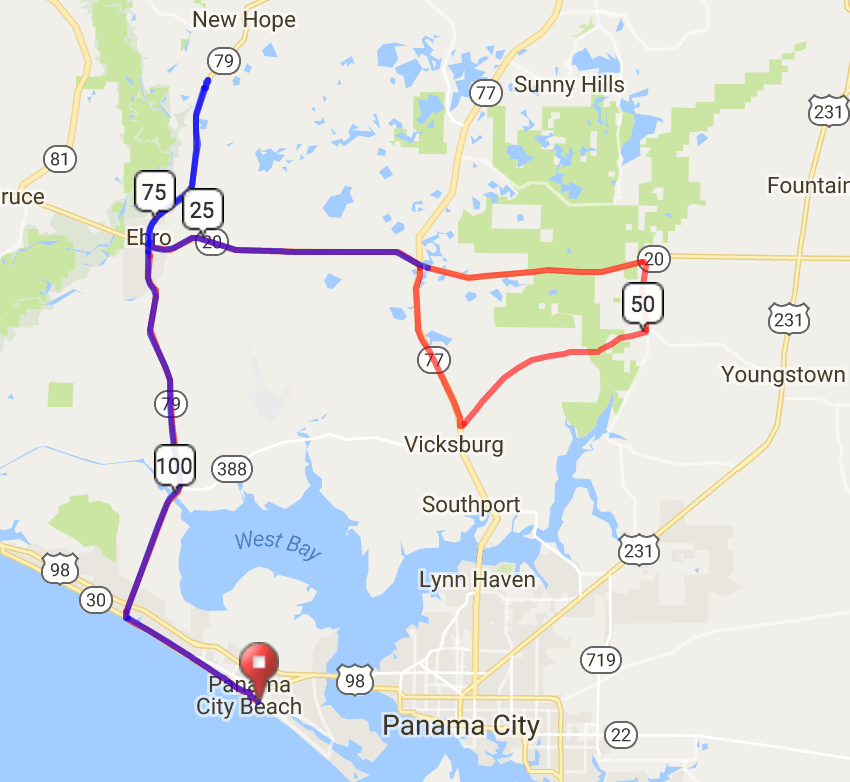
The Bike (View Online Here)
Introduced in 1999, this is the 3nd permutation of the Florida bike course. This is our breakdown of the course, how to ride it and what mistakes to avoid, as a description of one lap of the course:
Miles 0-7: Getting Out of Town
This is your first chance to blow the entire race. IGNORE the hammerheads and others racing, be safe and just get out to the turn on 79.
Miles 7 to 34: The One Climb and Settling In
If you reference the bike course profile, you’ll see That there is one single climb on the course – an overpass. You do this on both the outback and in both cases you just want to make it flat by pedaling intelligently. since this is so early in the day, you should still be settling in to your bike. The horrid should be coming down and you should be well into your nutrition plan at this point. Just ride steady, ride your race, and ignore the other athletes around you.
Miles 35 to 74: The Loop and Return
this is a new change to the course instituted in 2014. Rather than doing outback on terrible conditions, you now have a counterclockwise loop on decent roads. Since it is a full loop you are guaranteed to experience both ahead and tell when it some point – do yourself a favor and don’t fight the elements!
This is the “meat” of the race. During this time you’ll be moving into your steady pacing, or Zone Two. Your heart rate will come up and the field will start to settle in as you begin to notice the same riders around you.
In this section you will also find Special Needs. We strongly recommend that you stop. Even if you don’t need to simply to stretch and maintain your positional strength on the bike.
Miles 74 to 89: The Out and Back
This is the section of the course that no one talks about — it’s lost in the elevation profile and it seems innocent enough at just 15 miles. However none of these 15 miles are getting you back to transition. And this happens exactly at the time when you are most likely to be struggling mentally. It makes the section of the course particularly difficult, so plan ahead to be ready for it. We suggest that you consider this 15 mile segment its own part of the race and focus on executing it without jeopardizing the final return to transition.
Miles 89 to 112: The Return to Transition
This is a long straightaway section on 79, including the bridge. By the time you reach it, you will never have been so happy to see overpass in your life!
If the wind gods are on your side the section will have a slight cross tail carrying you back as you start thinking about the run. If the wind is coming off the water however this could be quite the slog.
Either way remember to stay aero and be steady on those pedals. If you back off at all you are losing speed and momentum into T2. As you head into town and down the main drag, remember to keep your wits about you as there are quite a few potholes and cars!
The Run (View A Map Online Here)
The run course hasn’t changed in…well…forever. It’s a fair course with zero gain and plenty of turns. Most people can still run well if they didn’t go crazy on the bike.
Miles 0-6.5, 13-19.5 = The Out
- Feels like “downhill” but maybe that’s just the outbound.
- Lots of spectator mojo in the first two miles and many, many athletes run much too fast here. Don’t be one of them!
- This section eventually cross the main road (twice!) and things get pretty quiet.
- You’ll head into the state park for a 1.5-mile out and then back. Super quiet here.
Miles 6.5 to 13, 19.5 to 26.2 = The Back
Once you turn around in the Park, you are running back towards Transition and the Finish Line. This section:
- Feels like uphill. There, I said it!
- Typically a slight headwind, and seemingly more turns than on the way out.
- Regardless of what your GPS says, the end of the loop seems too far away.
- Just put your head down in the last 3 miles. The many climbs and twists in this section make it very difficult to maintain a sense of where you are relative to the finish line, even though you have to run right past it. Just. Keep. Moving.
Finish Line
Awesome! You’ll run past special needs and right into the finish chute. There are some stands for spectators but it’s usually pretty quiet except right at the finish. Enjoy and don’t forget to live it up in the chute!
TeamEN Race Reports and Podcasts:
We’ve found race reports to be extremely effective tools to teach our athletes how to race: TeamEN post their race reports, as well as their race and race rehearsal plans, in our forums for peer review from their comrades. The result is a very rich, team-wide knowledge base of race execution tips and a culture of athletes helping athletes learn now to race better.
Endurance Nation Blog: Florida Race Report Archive
Endurance Nation Podcast Channel: Florida Race Report Podcast Interviews
Racing Ironman? Attend Our FREE, LIVE Four Keys Talks!
Learn how to execute like a pro with our free Triathlon Execution Seminar
IRONMAN® is a registered trademark of World Triathlon Corporation, is not affiliated with Endurance Nation®, and does not endorse or sponsor our products, materials or events.

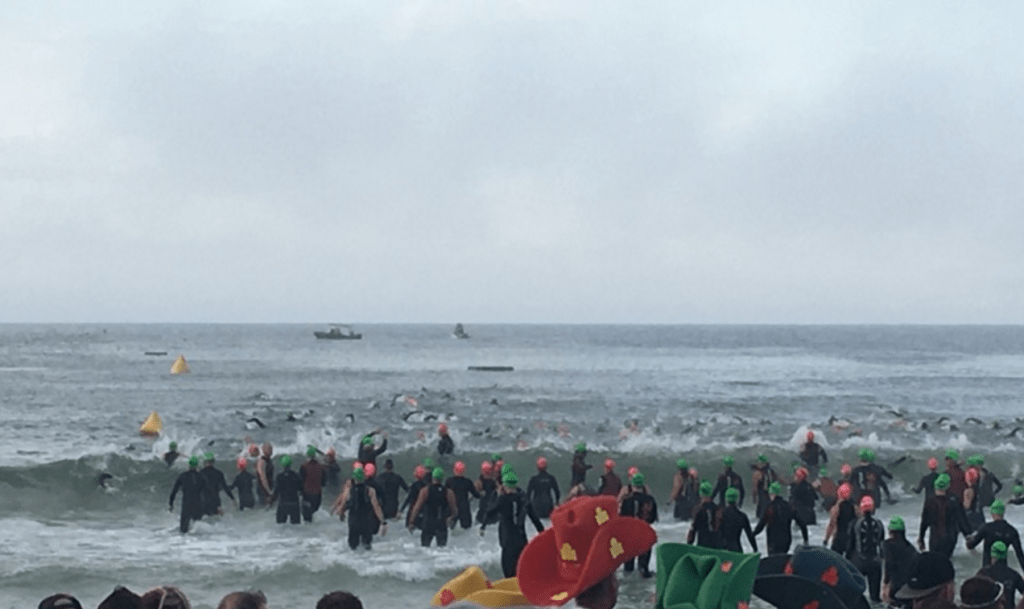
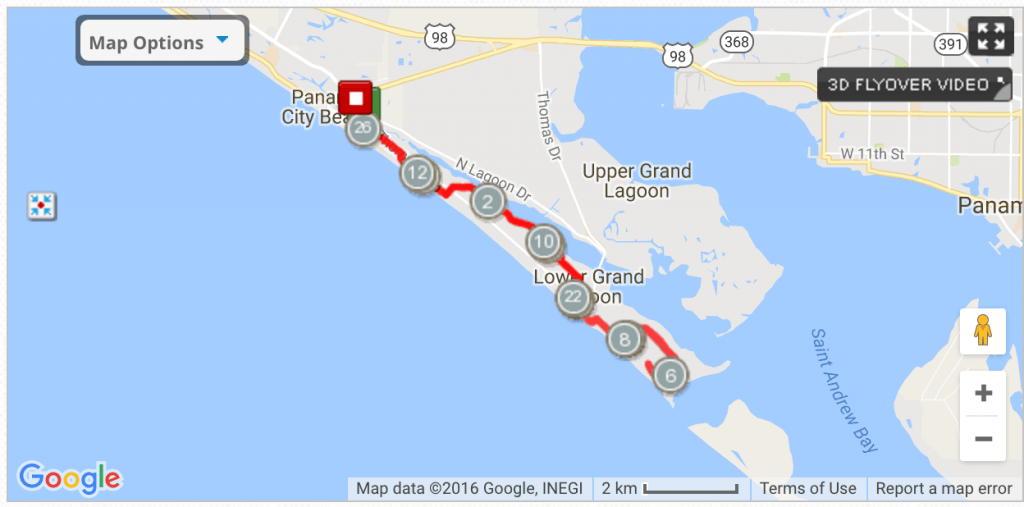
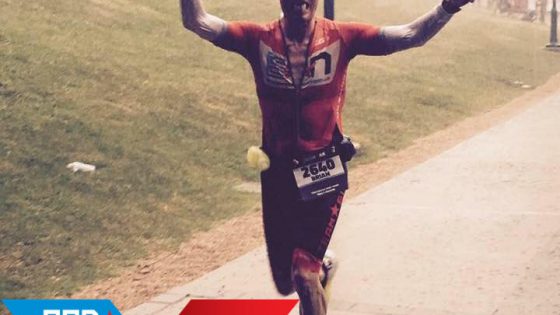
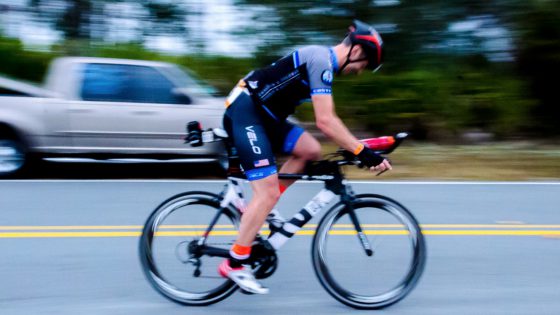
Leave a Reply